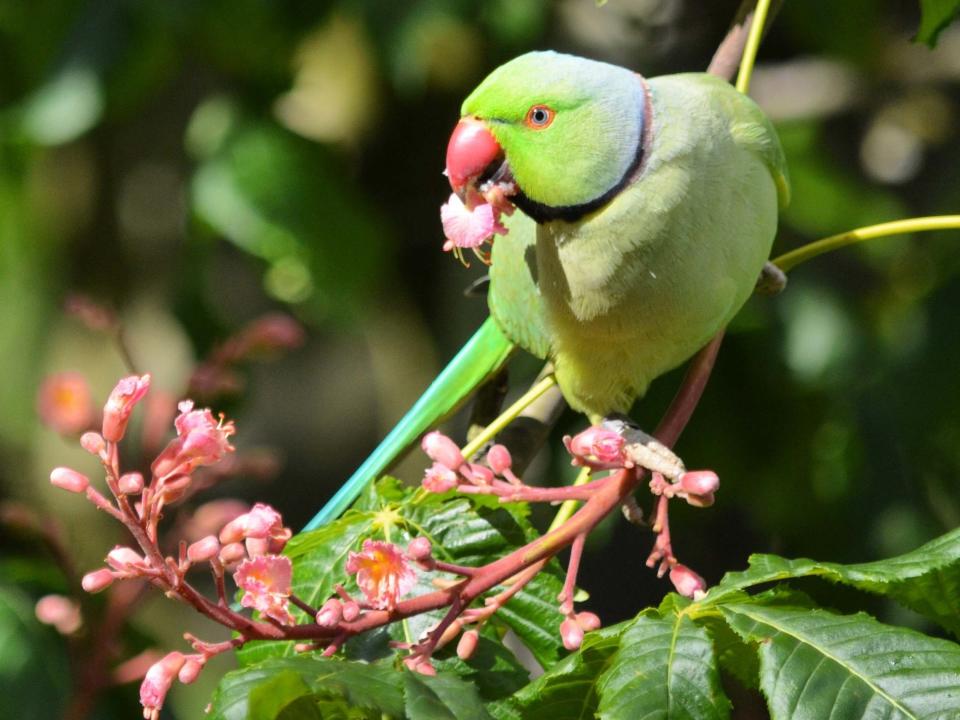Much debated mystery of bright green parakeets' arrival in UK solved, scientists believe

The origin myths around Britain’s burgeoning parakeet population have finally been busted in a new scientific study.
Thousands of the lurid green birds live in the UK, despite being native to places such as Australia, Africa and Latin America.
For years, fanciful stories about where they came from have abounded, but now researchers claim to have debunked all of them.
Using geographic profiling, the scientists – writing in the Journal of Zoology – were able to disprove claims the entire population grew from a single release at a specific place or time.
One popular theory they have now dismissed suggested the parakeets were escapees from the Humphrey Bogart film The African Queen, which was shot in Ealing in 1951.
Others claim the first birds were released by Jimi Hendrix on London’s Carnaby Street during the swinging 1960s.
A third suggestion is that the Great Storm of 1987 damaged aviaries so badly that hundreds of the small parrots were able to get into the wild.
However, the truth is less exciting, the researchers from Queen Mary University, University College London, and Goldsmiths have concluded.
They believe Britain’s booming population of the brightly-coloured birds grew from numerous individual releases of pet parakeets, both intentional and accidental.
Their spatial analysis of 5,000 unique records shows the birds did not spread from a single spot such as Carnaby Street or the Worton Hall Studios in Ealing.
Furthermore, there have been newspaper reports of the phenomenon dating back to the Victorian era, thoroughly debunking most of the modern origin myths.
There may also have been two spikes in releases – 1929-31 and 1952 – caused by sensationalised media coverage of human deaths from “parrot fever” outbreaks.
From 1929, the study’s authors found a string of lurid newspaper stories of people dying from psittacosis infections, which could have frightened parakeet owners into letting their birds go.
“It is easy to imagine the headlines of 1952, such as 'stop imports of danger parrots' leading to a swift release of pets,” said Sarah Elizabeth Cox, from Goldsmiths University.
"If you were told you were at risk being near one, it would be much easier to let it out the window than to destroy it."
The study’s geographical profiling methods were first developed for detectives to create lists of suspects in multiple crimes, overlaying locations of murder victims and the places suspects live and work.
But when applied to biological data the model can also identify sites of origin for invasive species, such as parakeets.
“The ring-necked parakeet has become a successful invasive species in 34 countries on five continents,” the study’s lead author Steven Le Comber said.
"The fun legends relating to the origins of the UK's parakeets are probably not going to go away any time soon.
"However, our research only found evidence to support the belief of most ornithologists: the spread of parakeets in the UK is likely a consequence of repeated releases and introductions, and nothing to do with publicity stunts by musicians or movie stars."

 Yahoo News
Yahoo News 